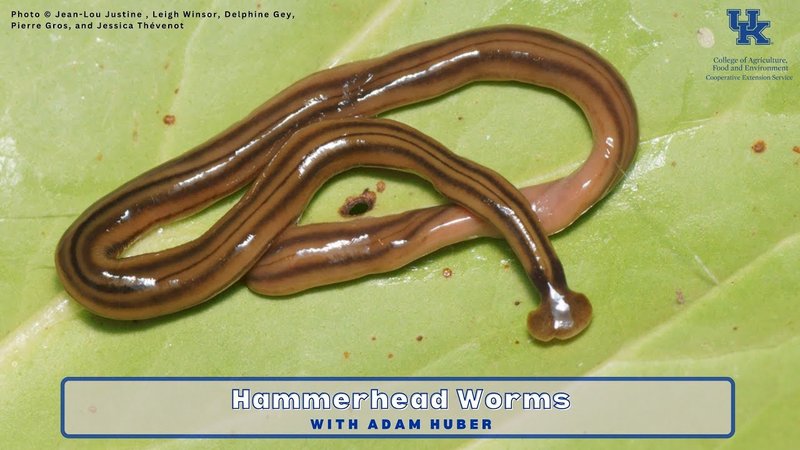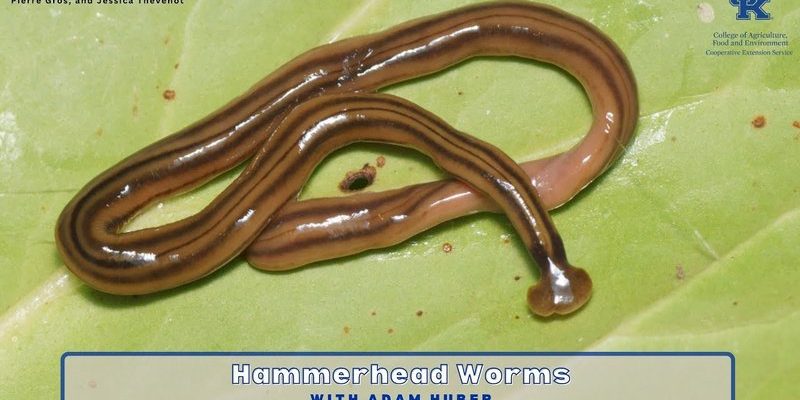
These fascinating creatures, part of the *Bipalium* genus, have a unique way of multiplying that sets them apart from many other worms. Instead of just laying eggs like most garden critters, hammerhead worms can reproduce in a way that might make you raise your eyebrows. So, why should you care about hammerhead worm reproduction? Well, it affects how fast they can spread through your garden, and if they become invasive, they could harm your beloved plants. Let’s dive into the nitty-gritty details.
Understanding Hammerhead Worms
Hammerhead worms are not your typical garden worms. They’re predators, mainly feeding on earthworms, slugs, and other small invertebrates. You can find them in various colors, from brown to greenish hues, and their distinctive hammer-shaped heads help them hunt. You might think of them as the “sharks” of the soil—unusual but oddly fascinating.
Their presence can be alarming, especially since they can affect the health of your garden. As a gardener, it’s essential to understand what you’re up against. Hammerhead worms are primarily found in tropical and subtropical regions but have spread to temperate areas. Knowing their life cycle helps you protect your plants from this invasive species.
The Reproductive Process
Here’s where the story gets intriguing. Hammerhead worms are hermaphrodites, meaning they have both male and female reproductive organs. When it’s time to mate, two worms will come together and exchange sperm. This might sound complex, but it’s Nature’s way of ensuring genetic diversity. After mating, they don’t lay eggs like most creatures; instead, they can break apart and regenerate.
So, what does this regeneration process mean for reproduction? When they’re cut, either accidentally or during routine gardening, each piece can potentially grow into a new worm. This capability is like having a backup plan for survival, making hammerhead worms pretty resilient.
Life Cycle Stages
This leads us to the life cycle of the hammerhead worm, which consists of several stages. It starts when they engage in mating, leading to fertilization and subsequent growth. Let me break it down:
- Mating: Two hammerhead worms come together, exchanging sperm and then parting ways.
- Regeneration: If separated, each piece can regenerate into a new worm, making them surprisingly prolific.
- Growth: New worms grow and will mature in a matter of weeks to a few months, depending on the environment.
- Reproduction: As they reach maturity, they’re ready to start the cycle all over again.
The ability to regenerate and reproduce quickly allows populations to explode. In a short time, your garden could go from a few curious hammerhead worms to a potential pest problem.
Implications for Gardeners
So, what does this mean for you as a gardener? If you’re noticing more hammerhead worms than you’d like, it might be time to take action. They’re not just weird-looking; they can disrupt the balance in your soil ecosystem by feeding on beneficial earthworms.
Here are a few things to keep in mind:
- Monitor Populations: Keep an eye on their numbers. If you see them frequently, you may have a growing invasion.
- Consider Removal: If they’re becoming a problem, research humane removal options rather than chemical treatments, which can harm beneficial organisms.
- Soil Health: Maintain healthy soil conditions that favor beneficial worms, which can help counteract hammerhead worm populations.
By taking proactive measures, you can help protect your plants from the potential harm these invasive worms may bring.
Controlling Hammerhead Worm Populations
Wondering how to keep hammerhead worms in check? There are a few strategies you can employ to manage their numbers without resorting to harsh methods. Think of it as creating a balanced ecosystem in your garden that favors the good guys while keeping the troublesome ones at bay.
One effective approach is to promote **biodiversity** in your garden. By planting a variety of plants and flowers, you attract beneficial insects and wildlife that can help keep hammerhead worms and other pests in check. Additionally, using natural deterrents, like nematodes or diatomaceous earth, can deter these worms without harming your plants.
Here are some practical steps to control their numbers:
- Physical Removal: If you see them, you can pick them up (wear gloves!) and relocate them to an area where they won’t cause harm.
- Improve Drainage: Hammerhead worms thrive in damp conditions. Improving soil drainage can make your garden less hospitable to them.
- Regular Monitoring: Check your garden regularly and take action if you notice an uptick in their population.
These measures not only help manage hammerhead worms but also create a healthier garden overall.
The Importance of Research
If you’re dealing with hammerhead worms—or considering how to prevent them—it’s beneficial to do a bit of research. Understanding more about their biology and behavior can help you implement better gardening practices.
Join local gardening clubs or online forums where you can ask questions and share experiences. You might even discover some nifty tricks from experienced gardeners in your area. Here’s the thing: every garden is different, and what works for one person may not work for another. So, collecting a range of insights can give you a more comprehensive toolkit to tackle any issues.
Final Thoughts
Navigating the world of garden pests can feel overwhelming, especially when dealing with unusual characters like hammerhead worms. However, understanding their reproduction and behavior gives you the upper hand. You’re not just watching these slippery little guys; you’re taking control of your garden’s ecosystem.
By monitoring their populations, encouraging biodiversity, and using humane removal methods, you can maintain a thriving garden. So next time you see a hammerhead worm, you’ll know exactly what you’re up against and how to keep your garden flourishing. Happy gardening!

